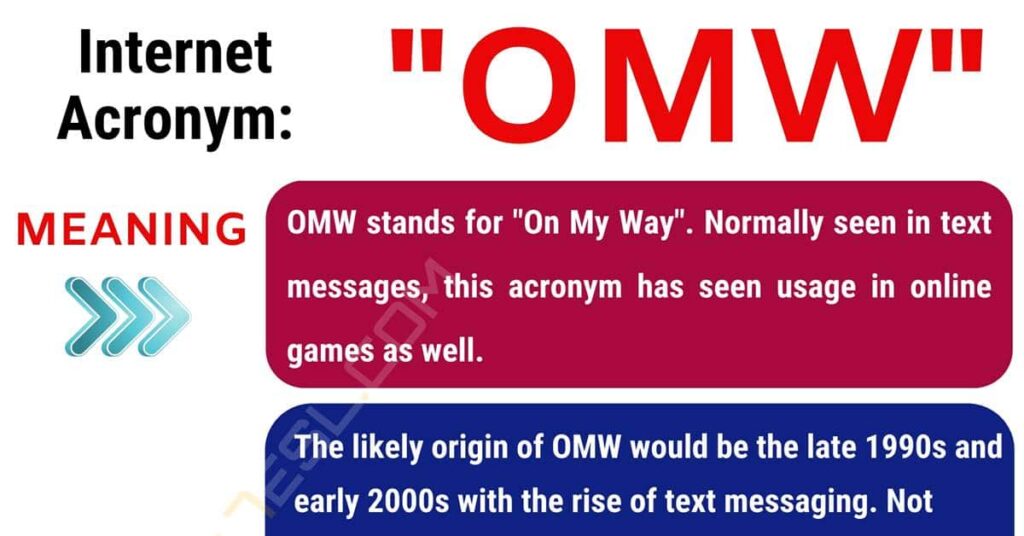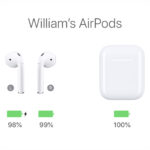Understanding OMW: What Does It Mean?
In the age of digital communication, acronyms and abbreviations have become an integral part of our daily conversations, especially in text messaging and social media. One of the most commonly used abbreviations is “OMW,” which stands for “On My Way.” This article will delve deeply into the meaning, usage, history, and context of “OMW,” as well as its variations and related phrases.
What Does OMW Mean?
OMW is an acronym that signifies that the speaker is currently en route to a specific destination. It is often used to inform someone that you are heading towards them or a particular location, indicating that you will arrive shortly.
Examples of OMW in Context
- Casual Conversations: “I’m running late, but I’m OMW to the party!”
- Professional Settings: “I just finished my meeting, and I’m OMW to the office.”
- Social Media: “Just got in the car, OMW to the concert! 🎶”
The simplicity and efficiency of using “OMW” make it a popular choice in quick communications.
Variations of OMW
While “On My Way” is the most common interpretation of OMW, it can also have alternative meanings depending on the context:
- Oh My Word: Used to express surprise or astonishment. For example, “OMW! I can’t believe you did that!”
- Other Contexts: In some niche communities, OMW might have other meanings, but these are less common.
The Evolution of Digital Language
The rise of texting and online communication has led to the development of a unique lexicon that includes acronyms like OMW. This evolution can be attributed to several factors:
- Character Limits: Platforms like Twitter initially limited the number of characters per tweet, prompting users to abbreviate their messages.
- Speed of Communication: In fast-paced conversations, abbreviations allow for quicker exchanges.
- Cultural Shifts: As younger generations adopt digital communication, new slang and acronyms emerge, reflecting changing social norms.
How to Use OMW Effectively
Using OMW appropriately can enhance communication. Here are some tips on how to incorporate it into your conversations:
1. Context Matters
Ensure that the recipient understands the context. OMW is best used when both parties are familiar with the abbreviation.
2. Use in Informal Settings
OMW is primarily used in informal conversations. Avoid using it in formal emails or professional communications unless you are sure the recipient will understand.
3. Combine with Other Information
When using OMW, consider adding additional details, such as your estimated time of arrival (ETA) or any relevant context. For example:
- “OMW! I should be there in about 15 minutes.”
4. Be Mindful of Tone
The tone of your message can change based on how you use OMW. Adding emojis or exclamation points can convey excitement, while a simple text may come off as more neutral.
The Impact of OMW on Communication
The use of OMW and similar acronyms has transformed how we communicate, making conversations quicker and more efficient. However, it also presents challenges:
Pros of Using OMW
- Efficiency: Saves time in communication.
- Clarity: Quickly conveys your current status.
Cons of Using OMW
- Misunderstandings: Recipients unfamiliar with the acronym may misinterpret the message.
- Overuse: Relying too heavily on abbreviations can lead to a lack of clarity in communication.
Cultural Context of OMW
The usage of OMW can vary across different cultures and regions. In some areas, people may be more accustomed to using abbreviations, while in others, traditional language may prevail. Understanding these cultural differences can enhance communication effectiveness.
Regional Variations
- North America: OMW is widely used in casual conversations among friends and family.
- Europe: The use of OMW may be less common, with some regions preferring full phrases.
- Asia: In countries with different languages, OMW may be adapted to fit local dialects and expressions.
Conclusion
OMW, standing for “On My Way,” is a versatile and widely recognized acronym in modern communication. Understanding its meaning, context, and appropriate usage can enhance your conversations and help you connect with others more effectively. As digital communication continues to evolve, acronyms like OMW will remain an integral part of our language.
FAQ Section
Q1: What does OMW stand for?
A1: OMW stands for “On My Way.”
Q2: Can OMW have other meanings?
A2: Yes, OMW can also mean “Oh My Word,” depending on the context.
Q3: How should I use OMW in a sentence?
A3: You can use OMW in a sentence like, “I’m OMW to the meeting; I should arrive in 10 minutes.”
Q4: Is OMW appropriate for formal communication?
A4: OMW is best used in informal settings. Avoid using it in formal emails or professional communications unless you are sure the recipient will understand.
Q5: What are some alternatives to OMW?
A5: Alternatives include “On the way” or simply stating, “I’m coming.”
Q6: How did OMW become popular?
A6: OMW became popular due to the rise of texting and online communication, where brevity is valued.
Q7: Can OMW be used in professional settings?
A7: While it is primarily informal, it can be used in professional settings if the context is appropriate and the recipient understands the acronym.
Q8: How can I respond to someone who texts OMW?
A8: You can respond with “Great! See you soon!” or “Thanks for the update!”
Q9: Are there any regional differences in the use of OMW?
A9: Yes, the usage of OMW can vary by region, with some areas being more accustomed to abbreviations than others.
Q10: Where can I find more information about internet slang and acronyms?
A10: For more detailed information, you can visit the Wikipedia page dedicated to internet slang.
Summary Table
| Acronym | Meaning | Context of Use |
|---|---|---|
| OMW | On My Way | Informal communication |
| OMW | Oh My Word | Expressing surprise |
This article provides a comprehensive overview of the acronym OMW, its meanings, usage, and cultural context. By understanding how to use OMW effectively, you can enhance your communication skills in the digital age.



